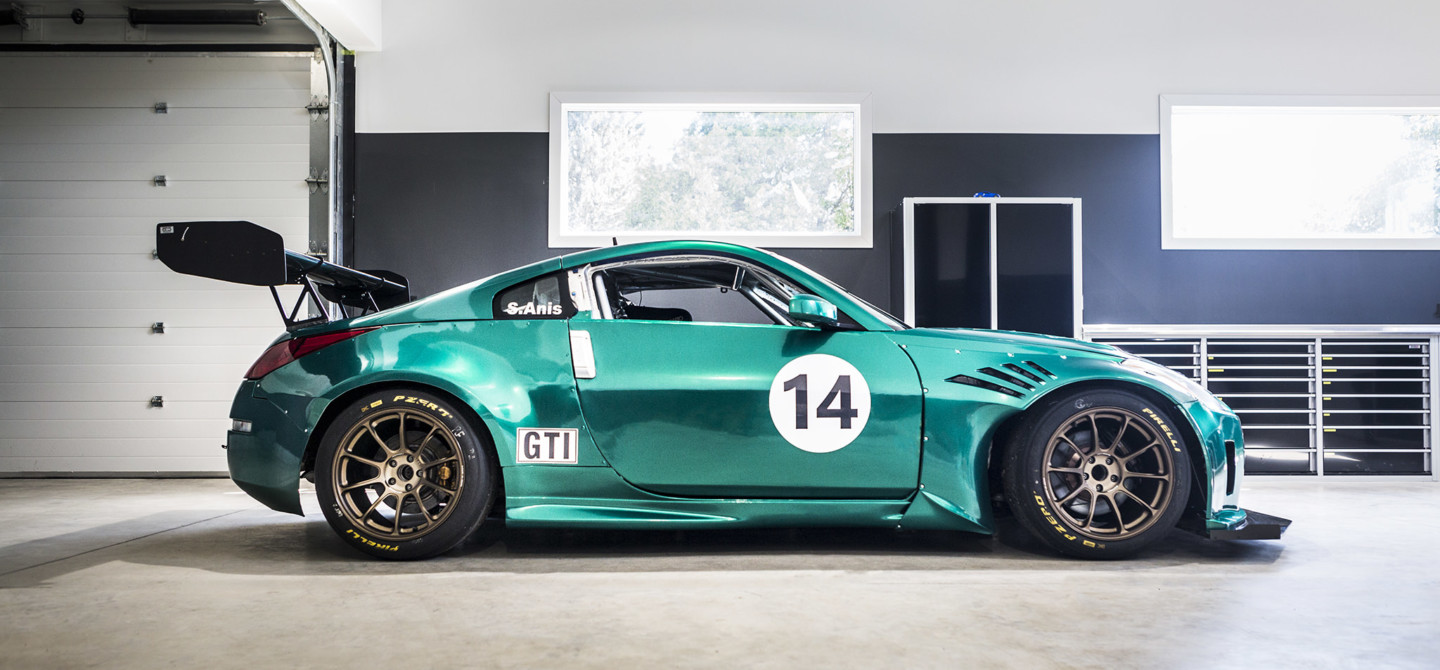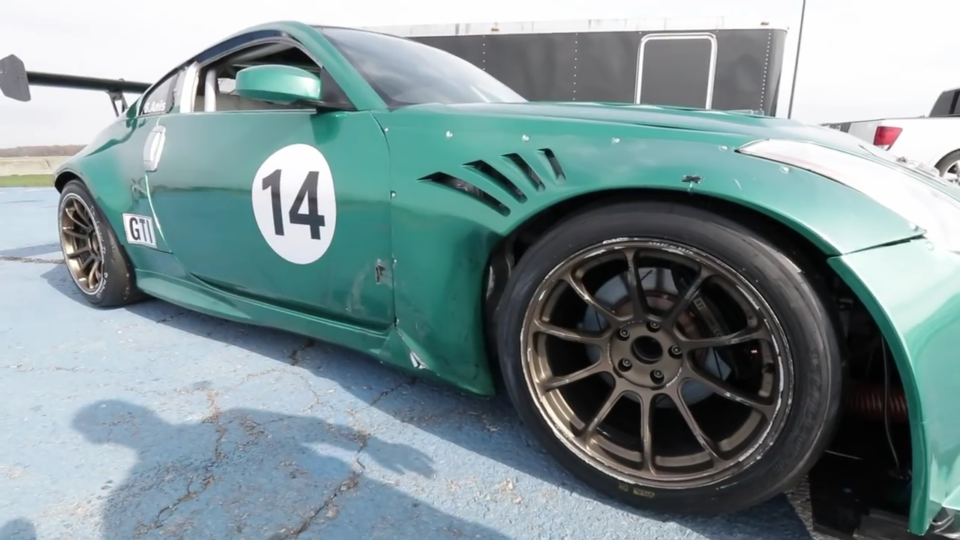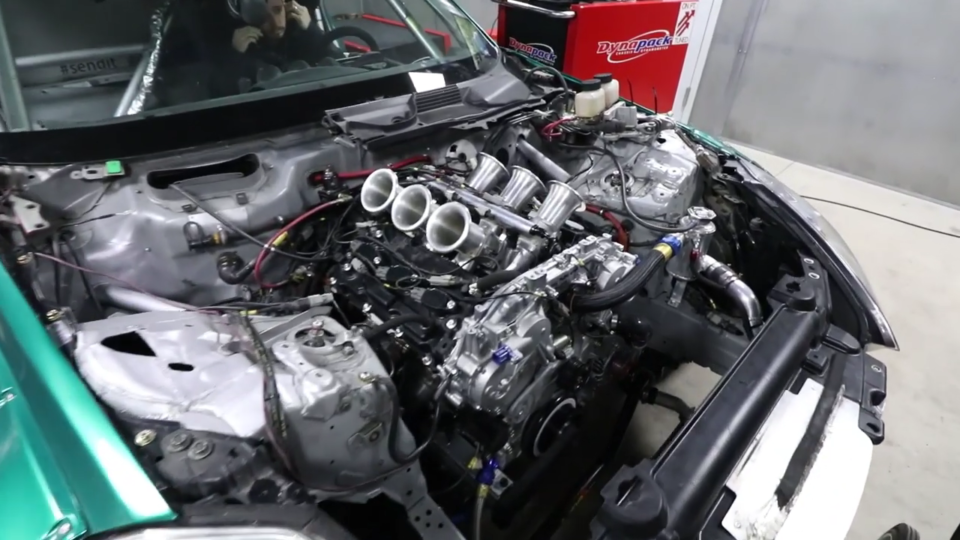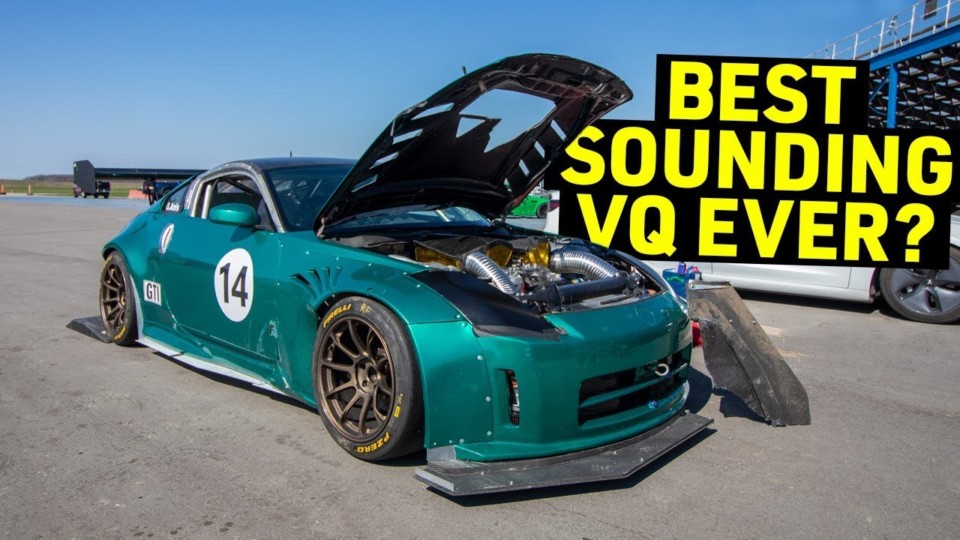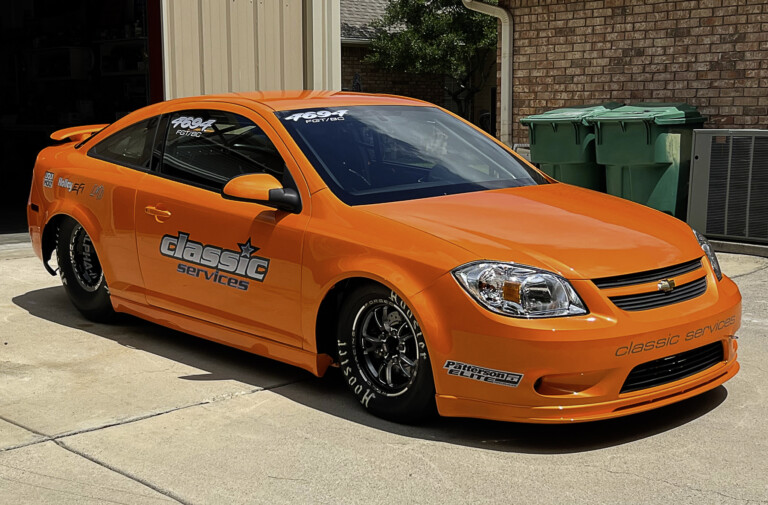There are few cars which can rival the On-Point Dyno 350Z for the money. The brainchild of the immensely talented Sasha Anis, this Nissan mimics the level of focus and the technology seen in top-dollar factory racing cars. Anis developed this time attack and club racing monster over the last few years; each time returning to Speed Academy with a car that’s been improved in a significant way, and every time wowing the Z car fans. All throughout the build, he’s stuck to three guiding principles:
- It must stay true to true GT race car in terms of style and character.
- It must be fun to drive, and reliable enough to win sprint races.
- It must stay naturally-aspirated.
These aims all contributed to a car with an extensively developed chassis. Koni 2822 adjustable shocks, plenty of carbon body panels, Stoptech ST40 brakes, and a NISMO Pro GT LSD are all impressive facets of a sorted car. However, the powertrain, save for a Quaife Engineering 69G sequential gearbox, was always relatively subdued for such a serious build. That’s no longer the case.
Prior to this latest motor, the On-Point 350Z produced 413 horsepower and could lap Toronto Motorsports Park in just 1:13.945—then went on to run a 1:12.1. That was done with a 3.7-liter VQ, and since then, Anis has been busy developing a no-compromise 4.2-liter that has arguably made it the most extensively developed privateer 350Z anywhere in the world.
Maximizing Displacement and Minimizing Clearances
Anis turned the VQ35 into a 4.2-liter race with the help Jim Wolf Technology. The VQ35HR block and heads benefit from a massive Bryant Racing crankshaft, Carillo rods, lightweight JE pistons, and 15:1 compression. That’s the sort of compression the Porsche 911 RSR’s engine makes, and that motor makes 560 horsepower with 4.0 liters of displacement.
“This engine is on the limit in so many ways,” Anis adds. To drag the most out of this relatively small-displacement motor, Anis focused on minimizing clearances and frictional losses. Additionally, with it mounted low and far back in the engine bay, it gives plenty of room for the radiator and improves weight distribution. Without a doubt, it’s a bonafide motorsport creation that’s both tractable and melodious.
For that reason, running it on Canadian 94-octane fuel seems almost sacrilegious, even if it is topped with a touch of octane booster. However, plenty of fresh oil and a very cautious series of dyno pulls produced the sort of figures which cause the stoic (and justifiably worried) Anis to stretch an unusually broad grin.
The auspicious results from the first two pulls filled the cold dyno cell with enthusiasm’s warmth, and gave Anis the confidence to spin the motor to 8,200 rpm. That pull yielded 537 horsepower at the wheels, or well over 600 horsepower at the crank. With plans to put a hybrid system in later this summer, it boggles the mind that this privateer’s VQ (albeit with Jim Wolf’s backing) can keep up with factory racing engines from major marques.
What Difference Does it Make?
Well, despite it being more of a shakedown session, it still outperforms the old setup by a considerable margin. A much punchier engine makes a great deal of change, and the new flat underbody helps some here—though Toronto Motorsports Park is relatively slow, so its probably not as effective as it might be at faster courses.
In addition to old tires and cold weather, Anis had to recalibrate his mind to match the new speed and the way it impacted the systems. A few hiccups with the ABS (which cuts slightly when sensing lateral load to allow for a four-wheel lockup in the event of a spin) made mid-corner speeds harder to find. What’s obvious to the onlooker is how the added torque required the TCS to intervene in every second-gear corner, and even a few third-gear corners. He relies a little on the system, which some might regard as cheating, but the added power and low-end torque is considerable and he’s trying to get every iota of performance out of the package.
Though an agricultural excursion outside of Turn 1 tore of some of the carbon floor and robbed him of downforce, he still ran in the low-1:11s—an incredible time, without a doubt. With new tires and a few tweaks to get the car into true fighting shape, there are another couple seconds in there, if not a few. And with this new masterpiece of an engine, a talented hand, and the technical tidbits to make any gearhead drool, there’s plenty to appreciate with this unique 350Z.


